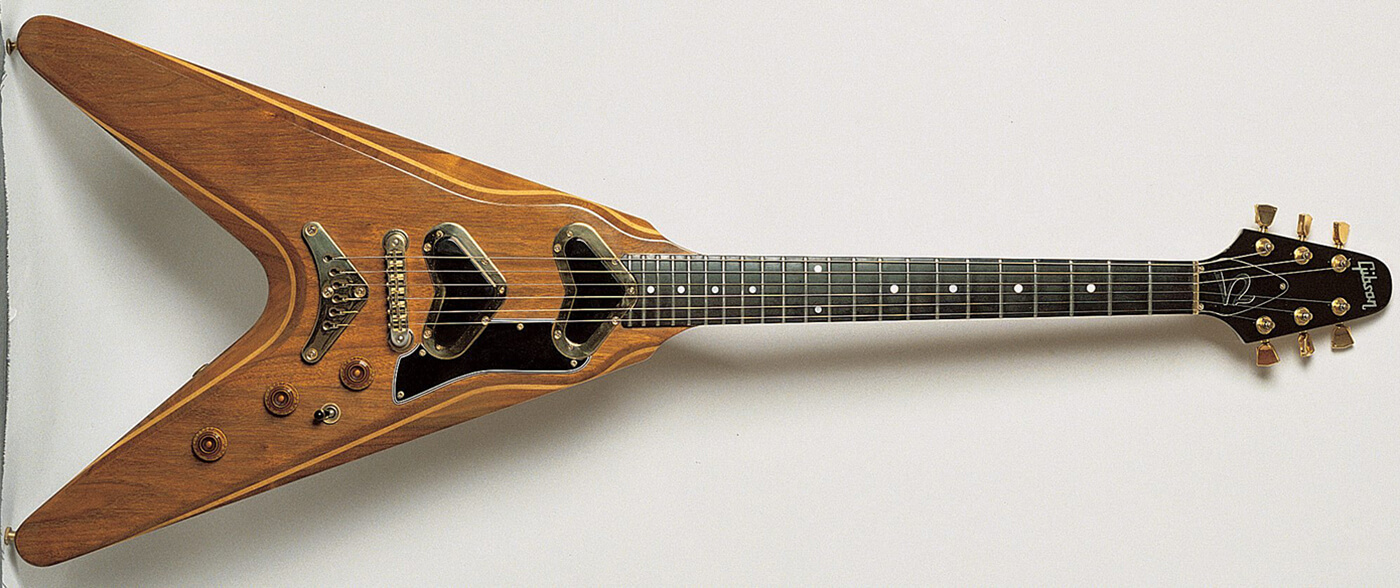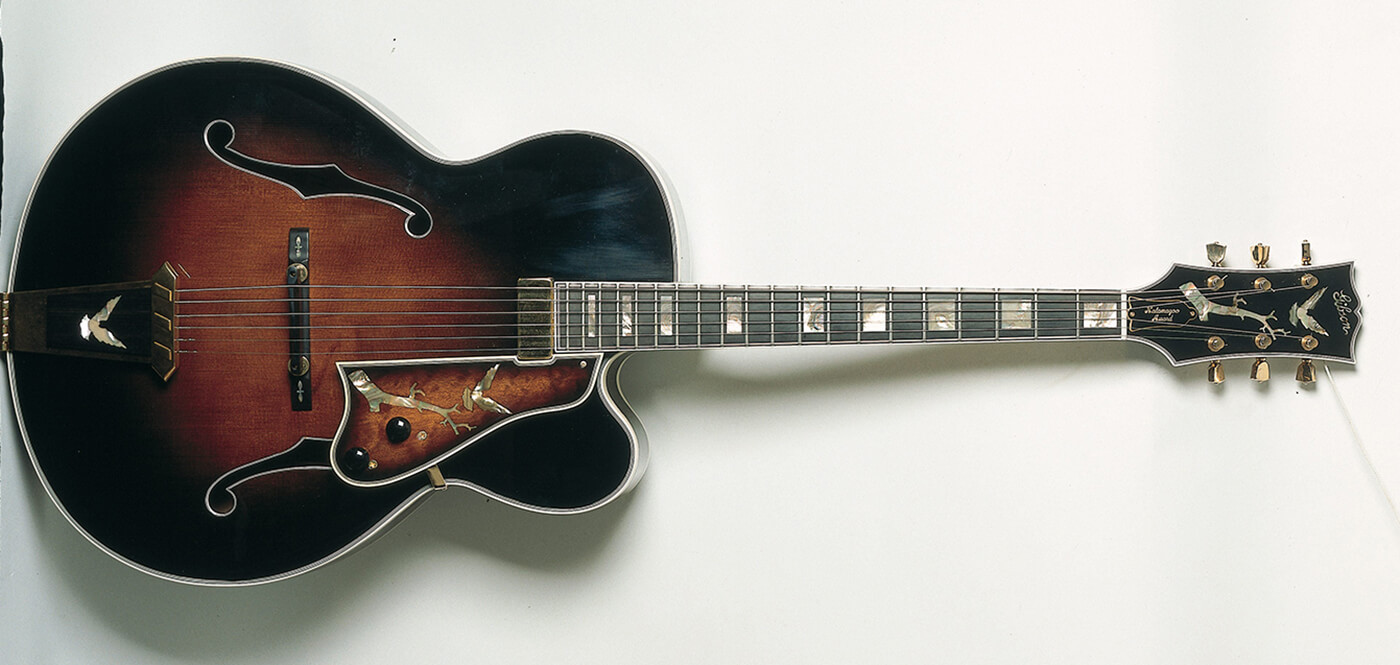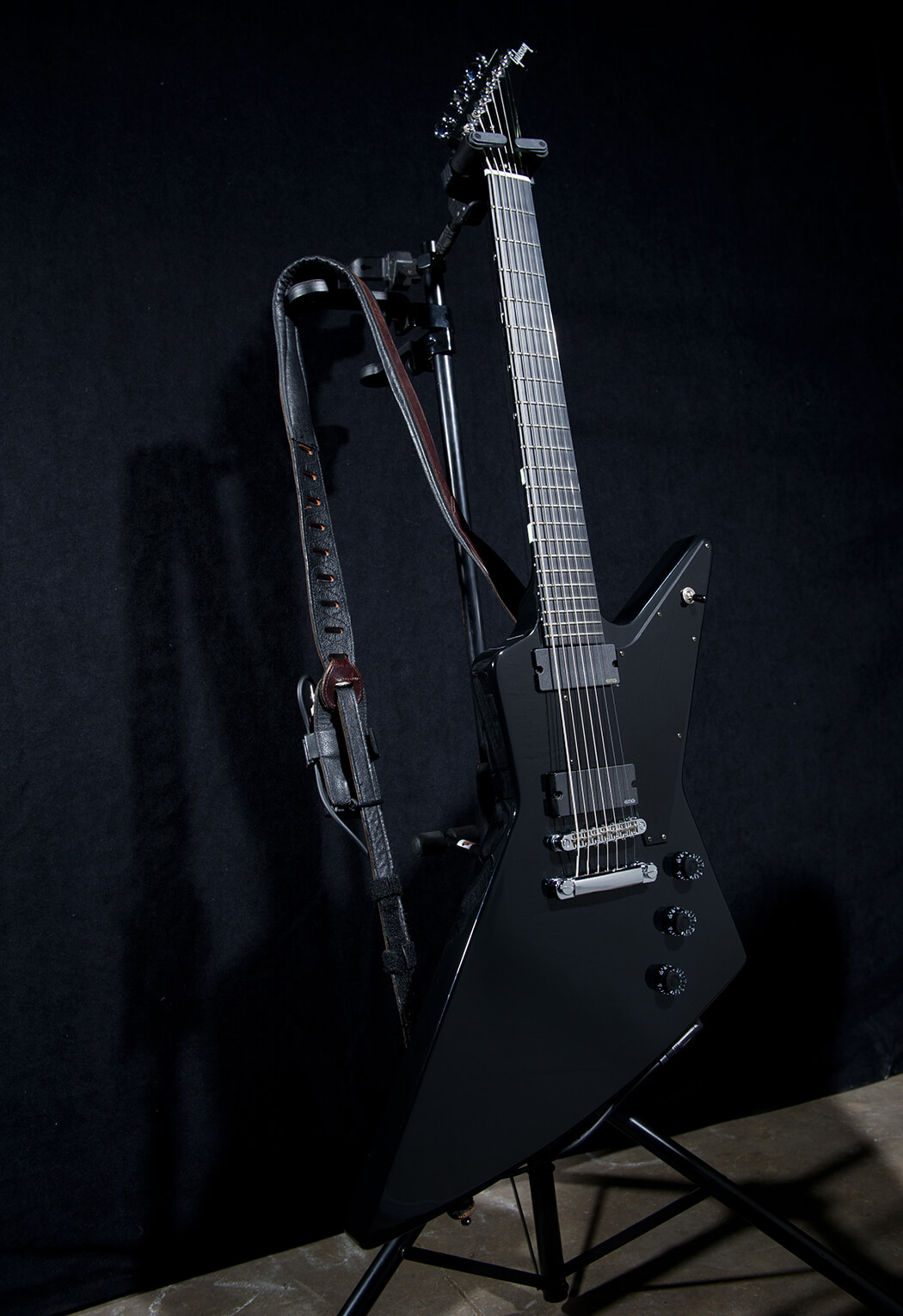5 Gibson Guitar Models That Deserve A Reissue
Should the big G bring back these lost treasures from its archive?

Guitars on display at the Gibson Studio in Florida. Image: John Parra/WireImage via Getty Images
Gibson is one of the big two names in guitar making, and over the course of its over a century of operation, the brand has produced a huge variety of instruments. Some, like the Les Paul, 335 and SG have become all-time classics… while some, like the Firebird X and Dusk Tiger are better off left in the past.
Some however, sit in between – not popular enough to become classics but still plenty good and interesting enough that we think they deserve a second look. What do you think?
- READ MORE: 7 Fender Guitars That Deserve A Reissue
Les Paul Personal
The Les Paul Personal was a variant of the Les Paul that was manufactured between 1969 – 1973. Unlike the Les Paul SG model that came before it, the Personal was the result of a close collaboration between Gibson engineers and Les Paul himself. Although the model wasn’t much of a mainstream hit, it was an interesting guitar that was favored by jazz musicians and, of course, Les Paul himself. The Les Paul Personal incorporated several new design elements, starting with a wider body than the traditional Les Paul shape.
The bodies were generally mahogany with a walnut finish. The electronics were made to be much more versatile as well – they added phase switching, an 11-position “Decade” switch, and an onboard microphone output on the upper bout of the guitar — designed for a gooseneck mic — with its own output and level control. Regrettably only 370 were made before they were discontinued. There was another variation called the Professional which was even more rare – only 118 of those were ever made between 1969 and 1971. Gibson did do a reissue of the Les Paul Recording model in 2013 which began its original run in 1971 on the heels of the Les Paul Professional and featured a lot of the same features as the Les Paul Personal.
Flying V2

When legendary designer Tim Shaw arrived at Gibson in 1978 and his first order of business was to design a guitar to be released alongside the E2 – a new take on the Explorer model. Tim Shaw also designed pickups for Gibson, attempting to recreate the PAF humbucker. He also worked with Fender and Guild Guitars through the years. The resulting creation was the V2 – one of the many interesting and experimental guitar models to come out of the highly controversial “Norlin Era”. While it gained some fancy new contours to the body, it stuck pretty close to the overall shape of the original V.
The body was made out of layers of walnut and maple – some had walnut on top and some had maple – the walnut V2s sold better than the maple. The Tune-O-Matic bridge was anchored to the body with two solid brass 5/8″ studs that were affectionately known as the “Sustain Sisters”. The V2 was produced from 1979 until 1982. From 1979 until 1981, the V2 had specially designed “boomerang” humbuckers – the point of the neck pickup extended up into the fretboard. In 1982 the pickups were swapped out for the “Dirty Fingers” humbuckers. The V2 was discontinued later that year and the E2 was discontinued the very next year.
Kalamazoo Award

Gibson has always hung their hat on being a top-of-the-line instrument – Gold Tops and Tuxedo paint jobs were employed to bolster the image of class and distinguishment. No guitar exemplifies this better than the tragically short-lived model, the Kalamazoo Award. The Gibson Kalamazoo Award was a 17″ archtop guitar model that was hand-built in very small quantities between 1978 and 1984. They were built with a rounded cutaway, a solid carved top, solid maple sides, and a carved maple back. Each part of the guitar was tuned by ear by master craftsman, Wilbur Fuller.
Unfortunately, Wilbur passed away in 2009 at the age of 91. He was with the company since 1954. Only about 85 of these were ever made and although Fuller is no longer there to build them, he did share his expertise in great detail with the people at Gibson. We can only hope that his wisdom has passed on through the ages. Fuller was very forthcoming about his process, as he stated in a 2002 interview with Vintage Guitar,
“I braced the top and tuned the bass brace to C and the treble brace to D. I also tuned the back to D, to match the treble brace… Taking wood off of the brace lowers the pitch, and sanding the crown out of the back produces the same effect… I built the guitar under pressure. I’d button it together around the sides, then tap on it. If it needed a change, I’d take it apart and carve more wood off. I buttoned the bodies together, with no glue, each time removing wood from the braces until the pitch was perfect.
While the body was still buttoned together, the crown in the back could be sanded down until it matched the treble brace. This method of tuning wood remained even after the instrument was strung up. I’d use a small rubber mallet or my index finger to tap over each brace at the notch in the f-hole or bridge point. I listened closely with my ear as I tuned these guitars – they were not mechanically tuned.”
The Kalamazoo Award would be a really interesting addition to the Custom Shop lineup.
Futura

The Futura was the precursor to the model we now know as The Explorer. Gibson made 4-6 prototypes of these guitars in 1957 and early 1958, some of which have found their way into the public. Some Futura necks found their way onto some of the very first Explorers that came off the line. Rick Neilson owns an Explorer with the Futura headstock. The body of the Futura had slightly altered proportions compared to the Explorer. The Futura was a model that never saw a proper production or release. That is until it was reissued for eight years between 1996 and 2008. Perhaps it is time to resurrect this far-too-often forgotten model with a proper production run.
Baritone Les Paul
Gibson has dipped its toe into the extended scale market a couple times, most notably with the Buckethead signature models, which sport a 27″ scale. Prior to that, in 2004 they made a Les Paul Studio with a 28″ scale. While the Buckethead signature was chambered and the body was made larger, the original Les Paul Baritones had standard sized bodies with traditional 9-hole weight relief. It would be nice to see a Les Paul or SG lineup of baritone guitars made available across all the formats – Studio, Standard, and Custom, perhaps with more aggressive pickups than were available in the 2004 models.
Baritones are often used for dropped tunings so having electrical accouterments to go along with the extended scale would bring the Les Paul design into a whole new realm of modern metal. It’s worth noting that Gibson did make a 7-string Les Paul at one point, but it featured the standard 24.75″ scale we find on traditional Les Paul guitars. I’m sure there are plenty of djent fans who would appreciate a reissue of these and maybe even an 8-string Les Paul.
